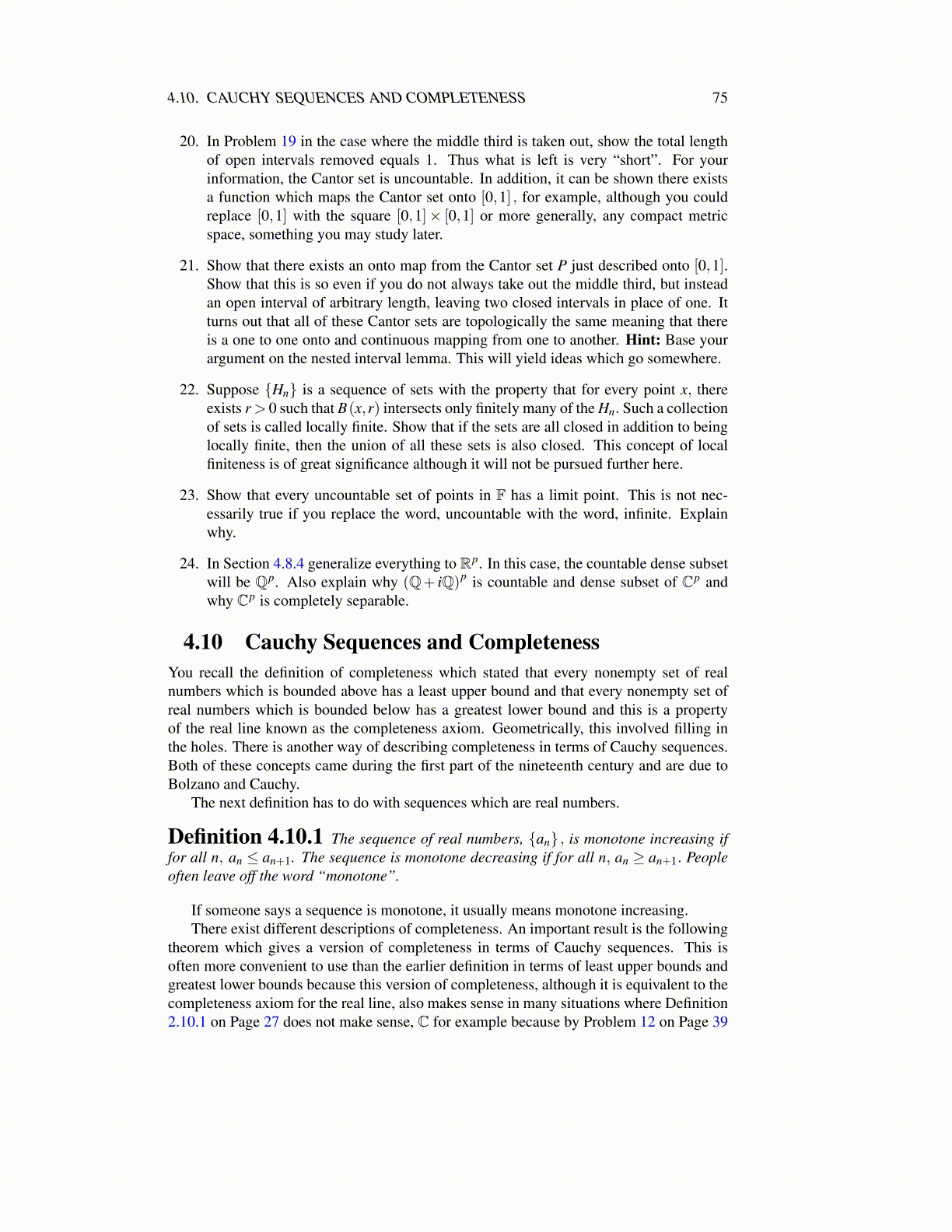
4.10. CAUCHY SEQUENCES AND COMPLETENESS 75
sequence is similar. Alternatively, you could consider the sequence {−an} and apply whatwas just shown to this decreasing sequence.
By Theorem 4.10.2 the following definition of completeness is equivalent to the originaldefinition when both apply. However, note that convergence of Cauchy sequences does notdepend on an order to it applies to much more general situations. Recall from Theorem4.8.14 that C and R are complete. Just apply that theorem to the case where p = 1.
4.10.1 DecimalsYou are all familiar with decimals. In the United States these are written in the form.a1a2a3 · · · where the ai are integers between 0 and 9.5 Thus .23417432 is a number writ-ten as a decimal. You also recall the meaning of such notation in the case of a terminatingdecimal. For example, .234 is defined as 2
10 +3
102 +4
103 . Now what is meant by a nonter-minating decimal?
Definition 4.10.4 Let .a1a2 · · · be a decimal. Define
.a1a2 · · · ≡ limn→∞
n
∑k=1
ak
10k .
Proposition 4.10.5 The above definition makes sense. Also every number in [0,1] canbe written as such a decimal.
Proof: Note the sequence{
∑nk=1
ak10k
}∞
n=1is an increasing sequence. Therefore, if there
exists an upper bound, it follows from Theorem 4.10.3 that this sequence converges and sothe definition is well defined.
n
∑k=1
ak
10k ≤n
∑k=1
910k = 9
n
∑k=1
110k .
Now 910
(∑
nk=1
110k
)= ∑
nk=1
110k − 1
10 ∑nk=1
110k = ∑
nk=1
110k −∑
n+1k=2
110k = 1
10 −1
10n+1 and so
∑nk=1
110k ≤ 10
9
(110 −
110n+1
)≤ 10
9
( 110
)= 1
9 . Therefore, since this holds for all n, it followsthe above sequence is bounded above. It follows the limit exists.
Now suppose x ∈ [0,1). Let a110 ≤ x < a1+1
10 where a1 is an integer between 0 and 9.If integers a1, · · · ,an each between 0 and 9 have been obtained such that ∑
nk=1
ak10k ≤ x <
∑n−1k=1
ak10k +
an+110n (∑0
k=1 ≡ 0). Then from the above, 10n(
x−∑nk=1
ak10k
)< 1 and so there
exists an+1 such that
an+1
10≤ 10n
(x−
n
∑k=1
ak
10k
)<
an+1 +110
which shows that an+110n+1 ≤
(x−∑
nk=1
ak10k
)<
an+1+110n+1 . Therefore,
x = limn→∞
n
∑k=1
ak
10k
5In France and Russia they use a comma instead of a period. This looks very strange but that is just the waythey do it.